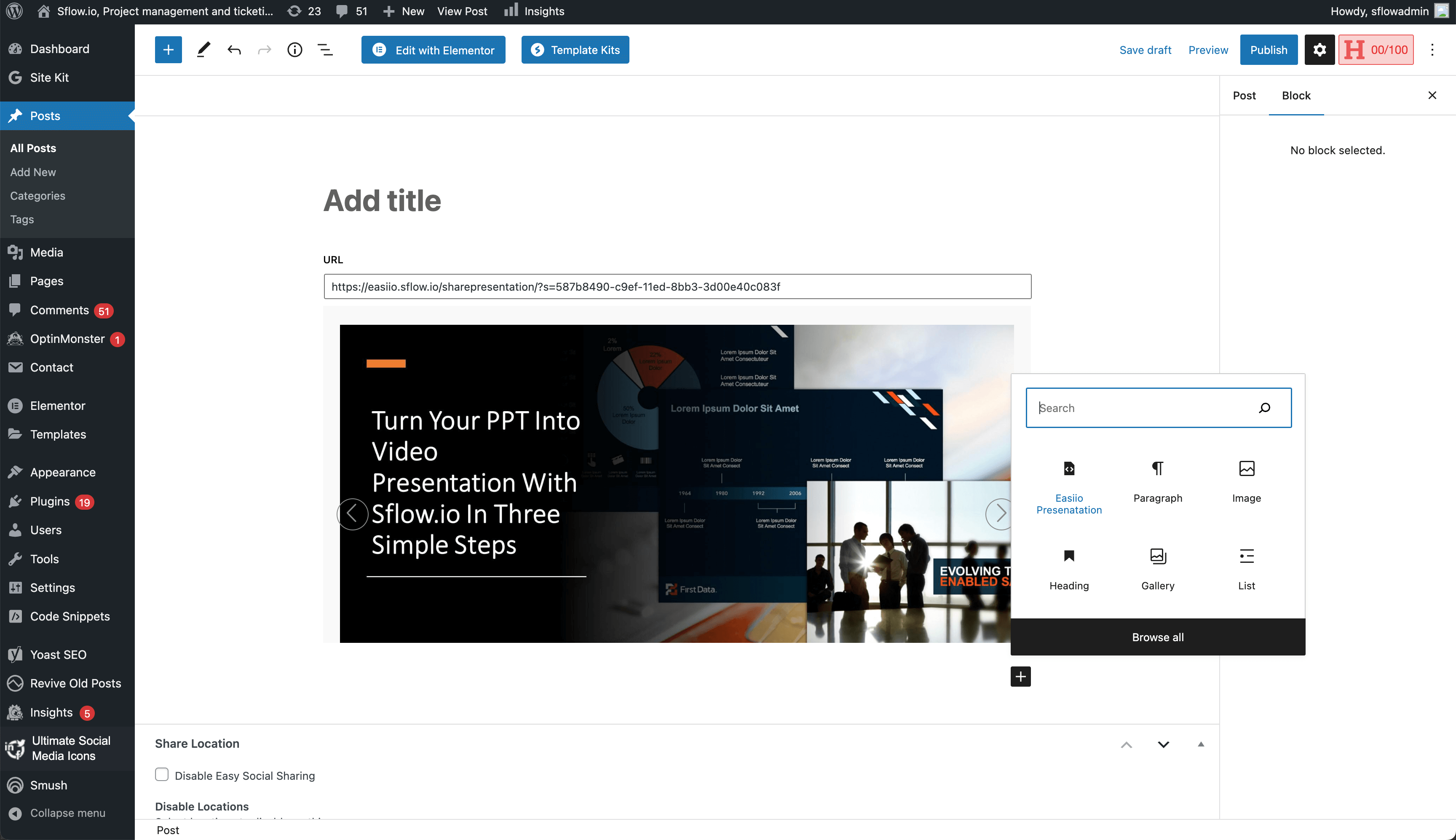

 Sflow
Sflow






WordPress Plugin
The sFlow Video Presentation WordPress Plugin lets you embed video presentations effortlessly on your WordPress website or blog, without worrying about compatibility issues.You can do a search on WordPress Plugin. It's easy to use and integrates smoothly with WordPress, making it perfect for business owners, educators, or anyone who wants to add engaging video content to their website.
 Sflow
Sflow








WordPress Plugin
The sFlow Video Presentation WordPress Plugin lets you embed video presentations effortlessly on your WordPress website or blog, without worrying about compatibility issues.You can do a search on WordPress Plugin. It's easy to use and integrates smoothly with WordPress, making it perfect for business owners, educators, or anyone who wants to add engaging video content to their website.


The stages of project management refer to the various phases that a project goes through from initiation to completion. These stages typically include initiation, planning, execution, monitoring and controlling, and closing. During the initiation stage, the project is defined and its objectives are established. In the planning stage, a detailed plan is created outlining the scope, schedule, budget, and resources needed for the project. The execution stage involves carrying out the plan and completing the project deliverables. Monitoring and controlling involve tracking progress, managing changes, and ensuring that the project stays on track. Finally, the closing stage involves formally completing the project and handing it over to the stakeholders.
The stages of project management are essential for ensuring the successful completion of a project. By breaking down the project into distinct phases, such as initiation, planning, execution, monitoring and controlling, and closing, project managers can effectively organize and manage resources, track progress, identify potential risks, and ensure that the project meets its objectives within the specified time frame and budget. Each stage serves a specific purpose in the project lifecycle, allowing for better coordination, communication, and decision-making among team members and stakeholders. Ultimately, the stages of project management provide a structured framework for guiding projects from start to finish, leading to improved efficiency, quality, and overall project success.


The stages of project management, including initiation, planning, execution, monitoring and controlling, and closing, are essential for the successful completion of any project. These stages provide a structured framework for project managers to effectively plan, organize, and execute tasks, ensuring that projects are completed on time and within budget. Use cases of these stages include setting clear project objectives during the initiation stage, creating detailed project plans in the planning stage, managing resources and tracking progress in the execution stage, identifying and addressing issues in the monitoring and controlling stage, and formally closing out the project upon completion. Overall, the stages of project management help streamline processes, improve communication, and increase the likelihood of project success.

Leverage the power of agile methodologies and AI tools to enhance team collaboration and project success.



01. Kanban view

02. List view

03. Calendar view

04. Github integration

05. Sprint

06. Release

07. Burn down chart

08. Gantt chart

Agile methodologies are widely used in software development for iterative progress and continuous improvement.

Agile project management helps in planning and executing marketing campaigns with flexibility and adaptability.

Agile facilitates rapid prototyping and iterative feedback in product development.

Agile methodologies ensure efficient and adaptable event planning and execution.Agile methodologies ensure efficient and adaptable event planning and execution.

Agile tools improve team communication and collaboration, leading to better project outcomes.

Agile methods allow for quick adjustments based on feedback and changing requirements.

Agile tools streamline workflows and reduce bottlenecks, enhancing overall team productivity.

Continuous testing and feedback in Agile ensure higher quality deliverables.

Agile reduces waste and focuses on delivering value, leading to cost savings.

Agile methodologies encourage regular project reviews and updates, increasing team transparency regarding project progress and goals.

InnovateTech Solutions Chief Product Officer

BrightWave MarketingCampaign Strategy Director

Precision Manufacturing Group Project Management Director
By using Your Website Name,
you agree to our Cookie Policy.